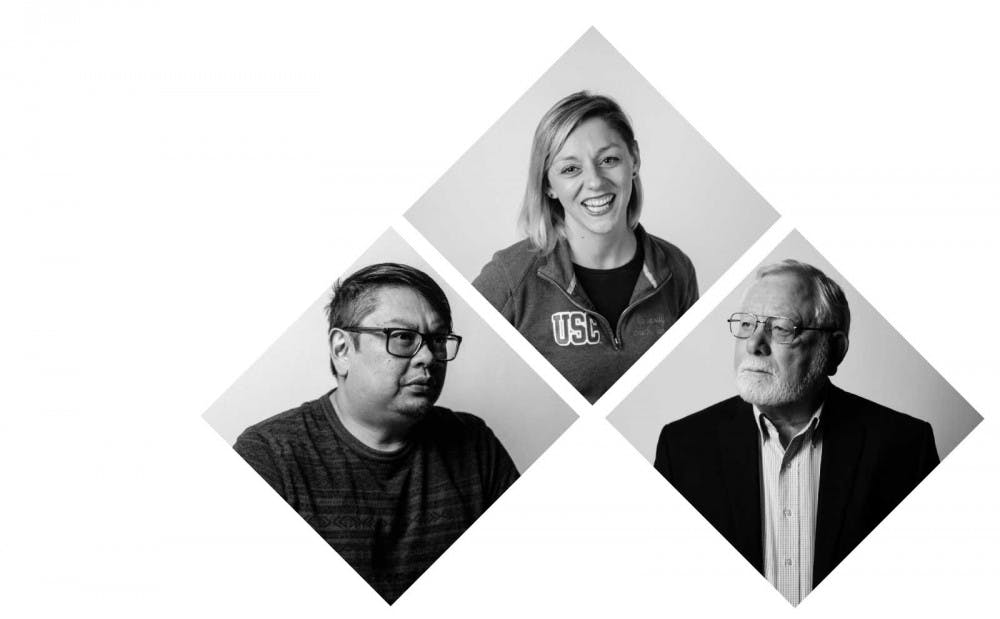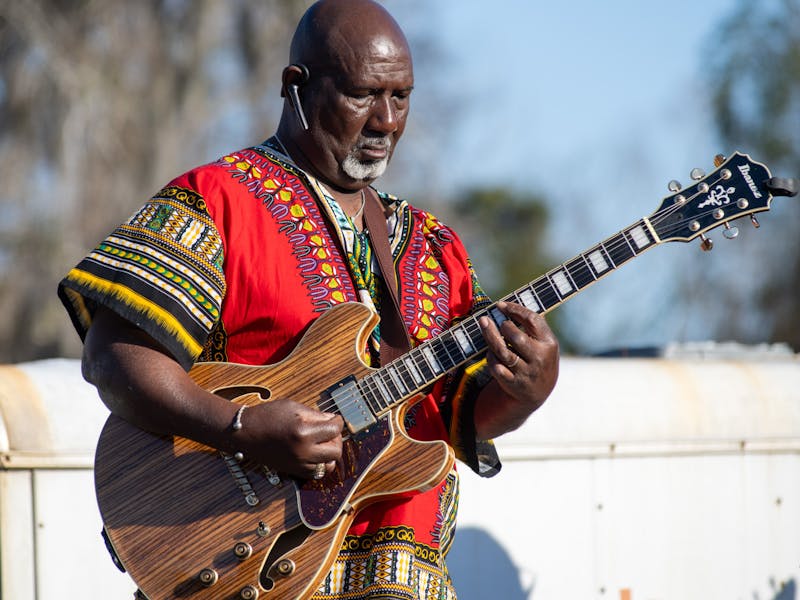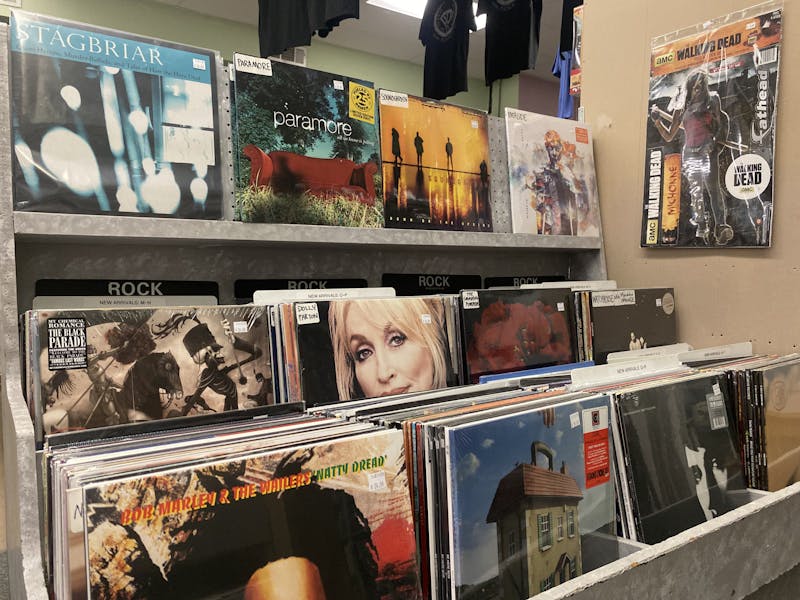With a student body exceeding 32,000, USC is an ocean of faces.
r
The university is in the top 100 largest undergraduate enrollments in the U.S., and forthe last three years each freshman class has been larger than the one before it. The tide of students that flood the Pickens Street bridge, the torrent of faces on Greene Street during a class change, keeps USC cohesive.
Late teens and 20-somethings all run frantically, tripping over bricks and to-do lists in the endless chaos that comes with making one’s way. It’s easy to become the all-consumed college student, only familiar with those in your dorms or classrooms.
In a university offering such a wide range of majors and programs, there’s greater appeal to students who don’t fit the stereotypical college mold to come back to school or to get started for the first time.
“Coming back, I definitely had a focus, and I knew I wanted to excel,” April Sundell, whom you may know as Sadie Black on Q 93.5, says. “All but one of my grades has been an A.”
Sundell, a 34-year-old mass communications student, came back to school after her newly- formed family began to settle in. Between three kids, a husband in the Navy and a job as an early morning radio personality, Sundell has plenty on her plate.
She’s back and forth between Q 93.5 and FOX 102.3, where she DJs on Saturday nights. Her entrance into radio is extremely atypical: after a chance encounter with the DJ of the then Magic 98.5, Sundell practically talked her way into running the behind-the-scenes operations.
“If you want something bad enough you just do it. It’s just my drive,” Sundell says.

She seems spurned on by her workload, and despite frequently mentioning how tired she is, you wouldn’t know it given her attitude. She’s enthusiastic and speaks frankly. “I feel like I’ve got my s--- together finally, not just organizationally but also my head space,” Sundell says. “The older I’m getting, the better I get emotionally and mentally. I look back and I'm like, 'Man, I should have had all this confidence when I was that age.'”
Sundell often finds herself answering the question, “How do you do it?” She credits her friends and family for their undying support, but she doesn’t hold anything back when talking about hardships.
“I like being busy because it kept my mind off the fact that my husband wasn’t home or that he was underwater,” Sundell says. “You never know what’s going to happen and sometimes you don’t sleep for weeks on end.”
Sundell typically arrives home after her kids do, and it's been a struggle for her to draw herself away from her kids for extended periods of time. It's why she dedicates herself to her school. Any time she can’t spend with her children or husband when he’s home she tries to make worth it.
She’s ready for graduation, and to finally cross something off her major to-do list. And see feels some compassion toward the typical frazzled college student.
“The end result is a good thing, and no matter how hard it is now, you just know that it will all end up well,” Sundell says.
George Teague, a 71-year-old photography student, is frequently mistaken for a professor. His snow white hair and immutable suit game is probably to blame.
"There’s about a dozen of us,” in reference to the amount of older male students in Mc- Master college.
He speaks with the cadence and deliberateness of someone who has had a lif etime of experiences. Teague studied archaeology at the University of New Mexico, and received his master's degree from the University of Arizona in 1971. After 35 years of site work and digs, he'd had enough and returned to his hometown in Sumter, South Carolina in late 2002.
Teague began by taking a single art class every semester in 2005. He sees a lot of similarities between archaeology and art which he thinks drew him to it.
“Archaeology and art history are pretty closely linked from the beginning because a lot of archaeology was museum-related,” Teague says. “I’d always enjoyed art galleries and museums, and I just marveled at how people could take simple materials and make such beautiful things.”

Teague has taken almost every art class on the roster, and he enjoys something about every medium. But he perks up when he speaks about photography.
“I like the mechanics of photography, especially using the older cameras,” he says.
As for his current work, Teague enjoys blending digital and analog processes. He excels at the latter but welcomes help from fellow students on the former. Teague, like many others in McMaster, realizes the importance of schooling even in fields of arts.
Robert Agullo, a 34-year-old Guam native, is a fourth-year photography student.
“When I first started, I was all over the place,” Agullo says. He’s won awards for his recent photo series that centers on his two daughters, ages 14 and 17, and their journeys into adulthood. He splits his time between McMaster and his two girls and wife — he's one of many students at USC you might call "nontraditional."
Agullo uses burlap as a constant texture throughout the series. It lends an element of consistency, but there’s more to it than that.
“It’s coarse, it hurts and it represents my pain,” Agullo says.
He's talking about the pain he feels as his daughters take their steps toward becoming more independent. The images themselves are an interesting mix of relatively warm light with the burlap adding a curiously haunting sense to the picture. The most impactful image of the series is of a burlap-wrapped, mummy-like figure lying on a couch.
“The wrapping of it represents a cocoon and them trying to break free as they grow up,” Agullo says.
He attributes much of his growth as a photographer to his return to school. His time in McMaster was instrumental in helping him find his direction and voice. Each semester focused on a different, key aspect of photography, whether it was consistency, lighting or framing.
“Last year I was at the New Orleans [Society for Photographic Education] conference, and I was approached by some people from Nebraska, Boston and New York,” Agullo says. “But being a parent that’s the hard part.”
Agullo is set to graduate in May, and he speaks anxiously when he talks about his postgrad plans. After all, school is what brought him his exposure.
"New Orleans was my first experience with something like that, going out and being judged and getting critiqued. That was eye-opening for me because they really considered your work as art," Agullo says.
He seems conflicted about the possibility of leaving Columbia. He has a strong desire to see other cities and places, but he's apprehensive about picking up his family and moving. Whatever choice he makes, however, his devotion will always be to his family and his photos.

None of the students have shied away from the challenges that returning to school has brought them.
"I’m getting into this routine, and I’m like, 'I know what I can do, I know how well I can do it, I’ve got confidence,'" Sundell says. "I’m not second-guessing myself as much, and it puts a lot less stress on me, and I just feel better about life in general."
Teague says it's about experiencing the unexpected.
"You get into classes you didn’t know you would get into or you didn’t know existed," he says, "and it opens up a whole new part of the world."
Correction: The original version of this article did not include the Q in the name Q 93.5.



